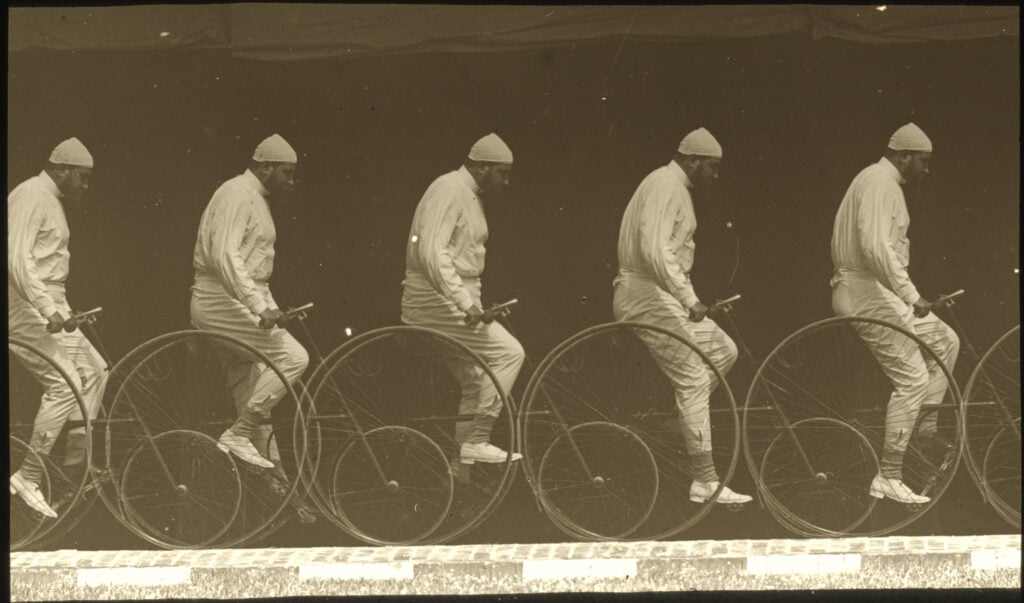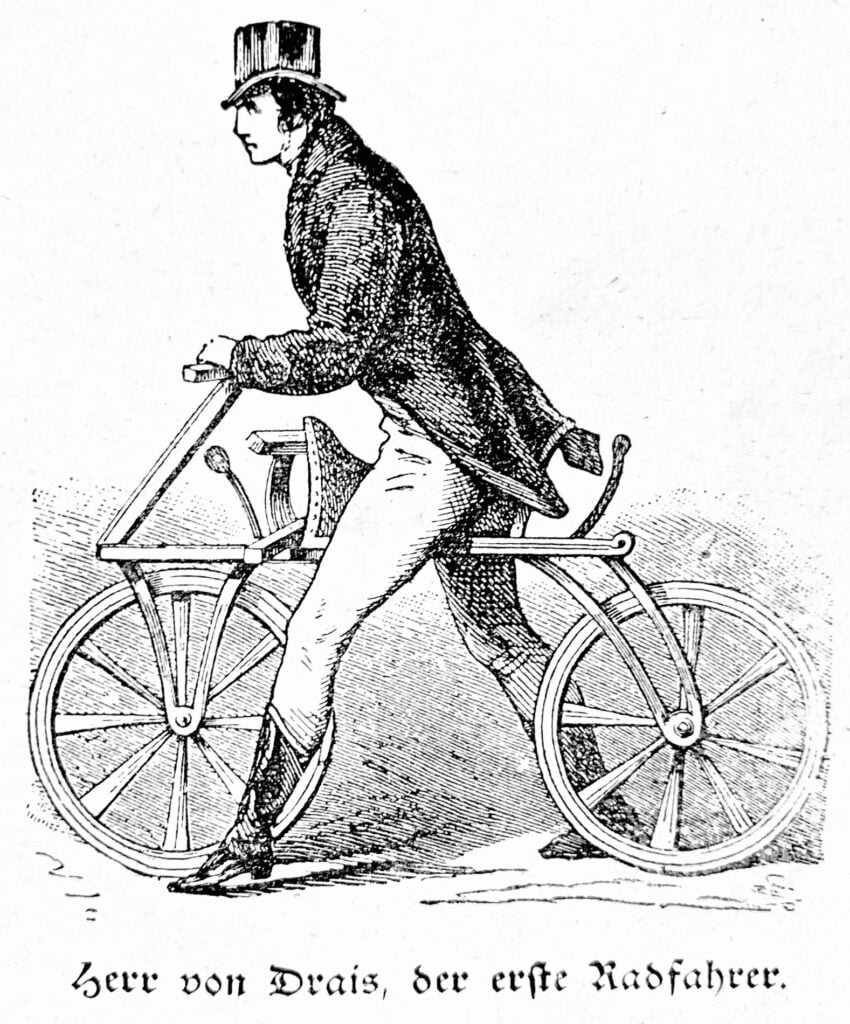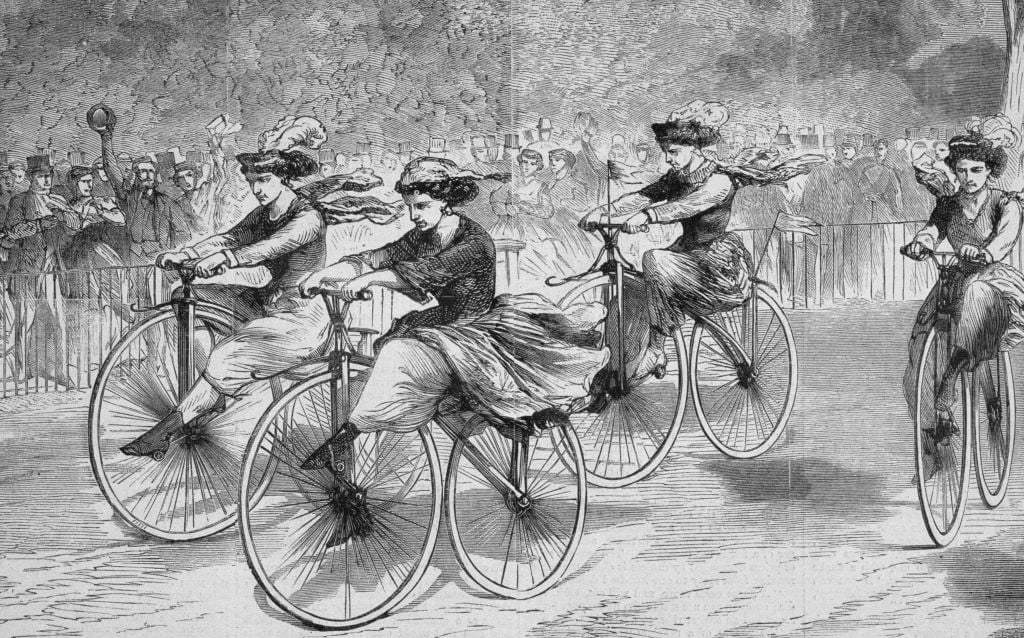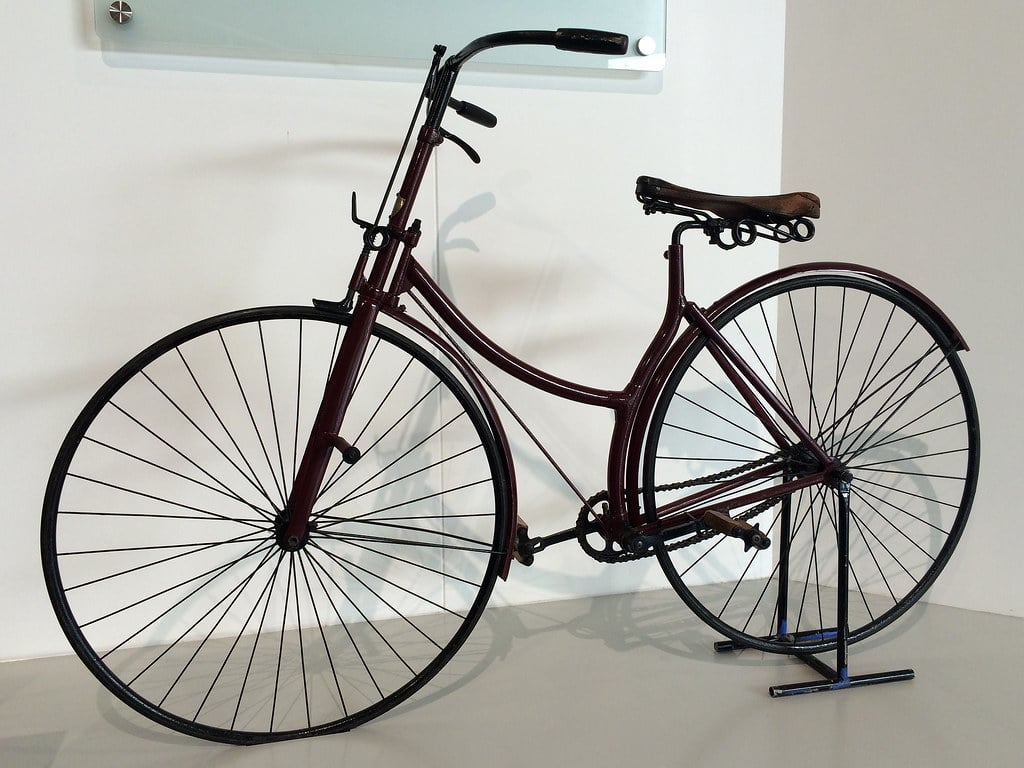The bicycle has evolved massively over the last 200 years, as inventors have honed the design into the sleek, lightweight and even electric vehicles we know today. Yet one man is still heralded as the father of the bicycle: a German baron named Karl von Drais.

Karl von Drais is believed to have first started work on a human-powered, four-wheel vehicle in 1813 based on centuries-old designs from Italy. The need to develop a new mode of transport was furthered still in 1815, when Mount Tambora, a volcano in modern-day Indonesia, had the largest volcanic eruption ever recorded. The effects were global, lowering temperatures, thereby affecting crops and leading to famine. Many horses starved and the need for Drais’ invention grew.

His first design was known by many names. Switching from four wheels to two, it was called the“Hobby-horse”, “velocipede” or the “running machine”. Somewhat less aerodynamic than modern bicycles, it weighed approximately 50 pounds (23 kilograms).
This weight came from two large wooden wheels on a thick wooden frame. Drais added a leather seat and a set of thick handlebars. Without pedals, the device was moved simply by the user’s feet.

It was a decent success. While it did not last long, Drais’ vehicle was popular among aristocrats in Europe, seemingly as much for fun as for practicality, but after the hobby horse was banned from sidewalks to protect pedestrians, their popularity dried up.
READ MORE: Where was the first underground metro system in the world?
In the background, however, Drais’ original prototype was being adapted and improved. The advancements really got into gear in France during the 1860s. Pierre Lallement is widely credited with being the man who first put wheels on a bike at this time, with the pair of Pierre and Ernest Michaux also pioneers. It was soon after that the word bicycle was first used to describe the vehicle, despite the bumpy ride meaning they were now known as “boneshakers”.

Attempts to combat this bumpiness resulted in the new models with an enlarged front wheel, also known as “penny-farthings”. While we imagine penny-farthings to be dated and eccentric nowadays, they were in fact incredibly modern in the 1870s and 1880s. Eugène Meyer and James Starley were the inventors of this model.
It was in this late 19th-century era that bicycles became more commonplace. Racing them became competitive, riding them became social at bicycle clubs, and an Englishman by the name of Thomas Stevens even rode one around the world. Stevens set off in April 1884 and returned home in December 1886.

Interestingly, it was in the two and a half years that Stevens was pedaling his way around the world that a fellow Englishman, John Kemp Starley (nephew of James Starley) perfected his “safety bicycle”. Without the need to climb four feet high or have your bones shake or move the bike with your feet, it was by far the closest version of a bicycle to what we have now. Equipped with a chain, two even wheels, pedals and a brake, it was the template for the incredible pieces of technology we still use today. While the individual components have evolved and improved, the safety bicycle doesn’t look all that different today.





